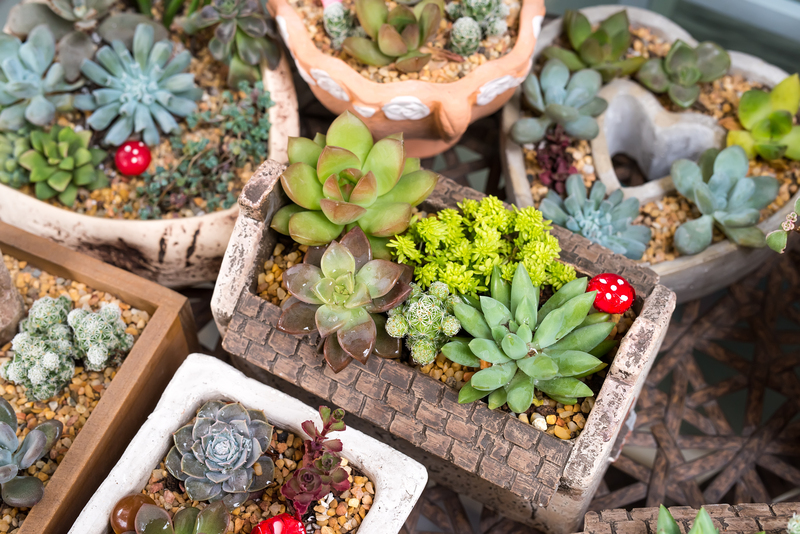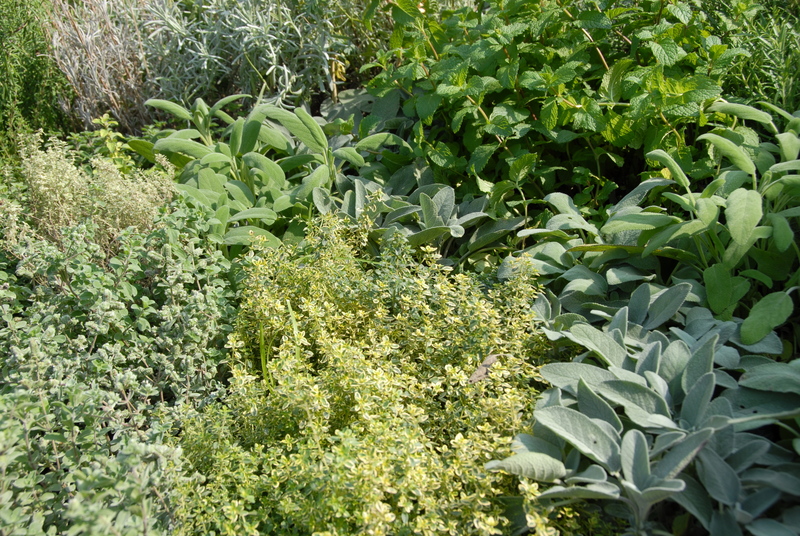Child-Friendly Yard Design: A Parent's Guide
Posted on 01/07/2025
Child-Friendly Yard Design: A Parent's Guide
Creating a safe, engaging, and delightful outdoor environment for your children requires more than simply adding a swing set to your garden. Child-friendly yard design involves careful planning and creativity to transform any outdoor space into a haven for play, exploration, and growth. In this comprehensive parent's guide, you'll discover everything you need to know about designing a kid-safe, inspiring, and functional yard that fosters development and creates unforgettable family moments.
Why Invest in a Child-Friendly Landscape?
Our children today spend more time indoors than ever before. However, research shows that outdoor play is vital for their physical, social, and mental development. Designing your yard with children's needs and safety in mind not only inspires them to put away digital devices but also encourages:
- Physical fitness via active play, climbing, and running.
- Imaginative and creative play in natural settings.
- Socialization and cooperation with siblings and friends.
- Sensory engagement with diverse plants, textures, and experiences.
A well-planned child-oriented backyard becomes a nurturing extension of your family home, supporting lifelong healthy habits and creating a space for cherished childhood adventures.

Essential Elements of a Kid-Safe Outdoor Space
Designing a child-safe yard means considering every element from a young explorer's perspective. Here are the essential guidelines for landscaping a safe and stimulating backyard play area:
1. Prioritize Safety from the Start
- Secure Boundaries: Install robust fences and lockable gates to prevent stray animals and keep little ones within sight.
- Clear Visibility: Remove obstacles and overgrown shrubs to maintain a clear line of sight across the whole yard.
- Non-toxic Plants: Choose pet- and kid-safe plants, avoiding any species known for being toxic, prickly, or allergenic.
- Soft Surfaces: Use grass, mulch, pea gravel, or rubber mats under play equipment to cushion inevitable falls.
- Chemical-Free Gardening: Limit use of fertilizers, pesticides, and herbicides for a non-toxic environment.
2. Design Zones for Different Ages and Interests
While toddlers need secure, easy-access areas, older children crave adventure and challenges. In your family-friendly yard design, consider:
- Baby/Toddler Corners: Fenced, shaded spaces with soft turf, sand pits, and gentle sensory elements.
- Adventure Zones: Treehouses, climbing nets, obstacle courses, and exploration paths for school-age kids.
- Teen Spaces: Chill-out decks, fire pits, or sports courts to encourage outdoor hangouts as kids grow.
- Nature Nooks: Butterfly gardens, bird feeders, and mini-ponds to inspire curiosity about wildlife.
3. Select Engaging and Age-Appropriate Play Equipment
The variety of child-friendly playground structures today is impressive. When selecting equipment, always check for age suitability, durability, and safety certifications. Popular options include:
- Swings and Slides: Timeless favorites for all ages, available in wood, plastic, and metal models.
- Climbing Frames: Encourage agility and balance with geodesic domes, monkey bars, or rock walls.
- Sandpits and Water Tables: Sensory play areas for digging, pouring, and experimenting.
- Trampolines: High-energy fun, with in-ground models and safety netting for extra security.
- Imaginative Playhouses: Inspire make-believe games with castles, cabins, shops, or pirate ships.
Tip: Always secure equipment on level ground and inspect regularly for wear or hazards.
4. Maximize Shade and Comfort
Kids rarely remember to stop playing for sun breaks. Ensure your child-friendly garden has plenty of shade options to prevent overexposure:
- Mature trees for natural canopy and cooler play zones.
- Shade sails or canopies over sandboxes, seating, or activity areas.
- Pergolas with quick-growing vines for a magical shaded nook.
- Comfortable seating for supervising adults and quick snack breaks.
Creative Ideas for a Backyard Kids Will Love
Modern children's outdoor space design goes far beyond the classic swing set. Here are inspiring concepts to make your yard a favorite play destination:
Edible Gardens
Let kids help plant strawberries, cherry tomatoes, or a pizza herb patch. Edible garden beds double as a teaching tool, connecting children to food production and encouraging healthy eating.
Secret Paths and Mazes
Low hedges, winding stepping stones, or bamboo tunnels invite hide-and-seek and encourage imaginative journeys through the garden.
Natural Play Features
Logs for balancing, boulders for climbing, and mud kitchens for messy creativity allow kids to interact safely with varied textures and landscapes.
Backyard Art Stations
Install a chalkboard wall, painting easels, or a bench for crafts. Use weatherproof containers for storing creative supplies, igniting your child's artistic side outdoors.
Wildlife Observation Points
Place bird feeders, insect hotels, and butterfly-friendly flowers where children can quietly observe and journal about visiting creatures.
Water Play Areas
Kiddie pools, runnels, and splash pads are perfect for summer fun. Make sure to supervise water features and empty pools when not in use.
Themed Zones
Design spaces around favorite storybook worlds, jungle adventures, or fairy gardens using themed decor and colors for extra magic.
Safety Checklist for a Worry-Free Play Yard
No matter how fun your child-centric backyard is, safety is always the top priority. Review this checklist regularly:
- Daily visual inspection for sharp objects, tripping hazards, and broken equipment.
- Double check gates and fence latches are secure.
- Remove toxic plants and educate children never to eat unknown berries, leaves, or flowers.
- Keep outdoor tools and chemicals locked away.
- Use soft surfacing under all playground equipment.
- Be cautious with water: never leave children unattended, and cover ponds or use safety barriers.
- Ensure furniture and structures are anchored and stable.
- Establish and practice family emergency procedures for the outdoors.
Planting for Play: Kid-Safe and Sensory Gardens
Use your child-friendly backyard not just for play equipment, but also as a sensory wonderland. Smart plant choices can:
- Enhance imagination - Tall sunflowers, willow dens, and dynamic grasses provide magical hiding spots.
- Encourage interaction - Snap peas, lamb's ear, mint, and nasturtiums are safe to touch, smell, or taste.
- Support wildlife - Pollinator-friendly native flowers attract butterflies and bees for learning experiences.
- Teach responsibility - A personal patch of garden teaches kids to nurture living things.
Always avoid plants known to be highly toxic if eaten or touched. Some common garden dangers include oleander, foxglove, lilies, yew, nightshade, and angel's trumpet. Check your country's guidelines for a full list of safe plants for children and pets.
Maintaining Your Child-Oriented Yard
After transforming your space into a kid-centric landscape, ongoing maintenance ensures safety and beauty last. Schedule weekly or monthly tasks to keep your yard inviting:
- Trim overhanging branches and clear leaf debris.
- Rake play surfaces to maintain cushioning.
- Regularly clean sandpits, playhouses, and equipment.
- Tighten bolts and check for splinters or rust on structures.
- Water and prune child-accessible plants for robust, healthy growth.
- Refresh mulch and safety surfacing when compacted or dirty.
- Inspect fences, latches, and gates for security.
Tips for Small Spaces and City Yards
Living in an urban or townhouse setting doesn't mean sacrificing outdoor fun. Even a compact patio or balcony can be a child-friendly play area with creativity:
- Use vertical gardens and wall climbers to create greenery on fences or walls.
- Add mobile sand/water tables or sensory bins that can be stored after play.
- Install soft foam tiles for safe flooring on hard surfaces.
- Choose foldable tunnels and pop-up tents for indoor/outdoor use.
- Include a cozy reading nook in a shaded corner or under a canopy.
For families in apartments, communal outdoor spaces can sometimes be customized with cooperation from neighbors or management.
Making the Most of Every Season
A great child-friendly yard layout is enjoyable year-round. Adapt your design for all-weather fun:
- Spring/Summer: Plant annuals, enjoy water play, picnic outdoors, and look for butterflies.
- Autumn: Collect leaves, build fairy houses, organize a backyard harvest festival, enjoy cool evenings around a fire pit.
- Winter: Add fairy lights, build snow forts, and create a "winter nature hunt" for tracking birds and animal prints.
Including covered spaces or a small shed for outdoor toys ensures playtime doesn't end when the weather changes.

Involving Kids in the Design Process
Don't forget the most critical element of all - child input! Children often have wonderful ideas about how they want to play outdoors. Ask them:
- What is their favorite playground activity?
- What sort of make-believe adventures do they enjoy?
- Which colors, shapes, or features excite them?
- How do they want to use the yard with friends, pets, or siblings?
By involving children in selecting equipment, planting seeds, or even painting playhouses, you nurture a sense of ownership and pride in the outdoor space. This makes them more likely to play outside, and care for the environment you've created together.
Conclusion: Designing Outdoor Spaces Where Childhood Memories Grow
Investing in a thoughtful, safe, and child-friendly landscape design is one of the most rewarding upgrades a parent can make. It's about more than just safety - it's about fostering imagination, resilience, and the simple joy of being outdoors. Whether you have a sprawling backyard or a tiny city patio, creative planning and child-centered ideas can unlock hours of exploration, creativity, and family connection.
Start your own backyard transformation today, and watch your garden bloom into the heart of your children's happiest memories!

